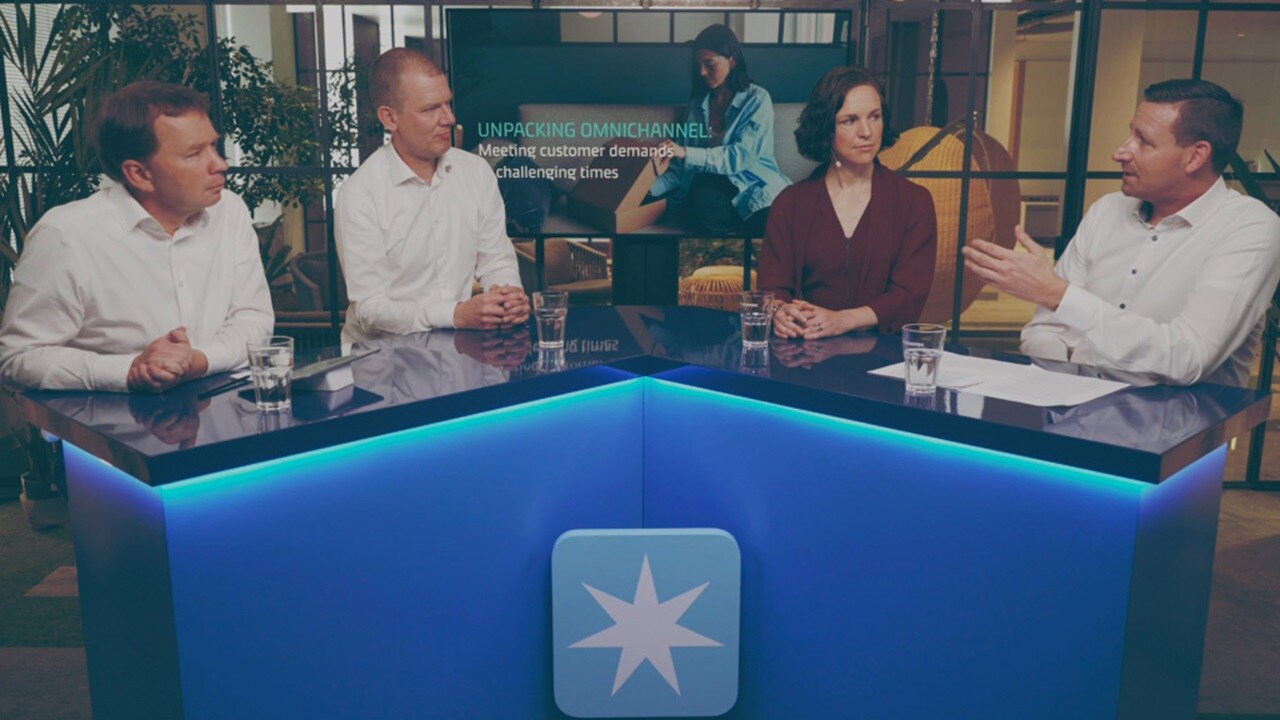With the rapid growth of omnichannel over the last two years, we're constantly discussing the impact and opportunities the supply chain can bring — both internally and with our partners.
On 16 May 2023, we recorded and published a roundtable discussion exploring how businesses can develop omnichannel strategies to meet customer demands while finding efficiencies, cutting costs and optimising inventory to stay competitive.
Joining our Head of E-Commerce Logistics, Naud Frese, were Kirstin Mennella, Managing Director and Partner, Boston Consulting Group (BCG), Dr Christoph Tripp, Professor of Distribution and Retail Logistics, Technical University of Nuremberg, and Carsten Pingel, VP Commercial Strategy & Excellence, Valtech.
Developing omnichannel logistics strategies is often about push and pull, compromises, competing ideas and balance. Here are some of the key topics we covered in Unpacking Omnichannel: Meeting customer demands in challenging times:

Speed vs accuracy
For retailers today, there’s an expectation of speed in delivery. Especially when you deploy a direct-to-customer model. But this race to accelerate has been expensive, as Carsten Pingel explained, “We’ve taken on a lot of costs because it’s been speed at all costs.”
The truth is speed may not be as important as we’ve come to believe. “We’ve been focused on speed for so long. But a minority of people want a delivery in two hours. Most want it at a time that’s convenient for them,” explained Dr Christoph Tripp. “Accuracy is so much more important than speed.”

Omnichannel or multichannel?
For Pingel, a lot of omnichannel models are only skin-deep. In the back end, “the reality of what we are talking about is often multichannel rather than omnichannel. And the proof point is that when you go down into the customer experience, it is more a well-orchestrated multichannel business; it's not really seamless”.
This highlights the challenge of true omnichannel. But why do businesses get it wrong? Dr Tripp explained, “I always describe it with FOMO — the fear of missing out.
So, you think because your competitors are doing something, you have to do it. Then you are investing massively in all different omnichannel services. But I think it is better to have one or two very focused and high-quality services, than having everything but on a low level.”

Clear strategy over knee-jerk reaction
Don’t do omnichannel for omnichannel’s sake. It’s easy to forget that it’s the tool, not the goal.
Omnichannel success, according to Kirstin Mennella, comes from “a clearly defined, clearly communicated strategy that aligns people and informs decisions. And the strategy must not be based on ‘invest at all costs’; it’s based on what do your customers need at that touchpoint. How does this make their life better long term?”
Customer experience vs operational efficiency
“Omnichannel means really changing the whole structure of your company,” said Dr Tripp. This requires strong leaders that can listen to commercial needs, translate those requirements for supply chain and logistics and inspire collaboration across the business. Yet the needs of operations should never set the agenda. As Mennella explained, “The really successful leaders in the omni space don't think channel, don't think market, don't think functional silo… first and foremost they think about what's the right thing for our consumer? And how does that add value over time?”


Ship from source or ship from shop?
Logistics is trying to move closer to the customer, and a lot of effort and investment has gone into efficient ship-from-store solutions.
The challenge now, as described by Naud Frese, is that we’re witnessing the “emerging trend of ship from source, where we see new entrants coming into the market that actually drive a different kind of speed, more towards accuracy”.
And it’s a cost advantage too. As Pingel pointed out, delivery is expensive, so when you use a from-source model you “remove a whole cost centre from the supply chain”. The savings are compounded when combined with some customers’ willingness to use self-service from local collection points.

Transparency and visibility
“Covid-19 has led to a situation where everyone is talking about transparency and visibility in all channels, on all different levels, operational and strategic,” said Dr Tripp.
The key to this is connecting your data from end to end — or “from PO (purchase order) to POD (proof of delivery)”, as Naud Frese puts it — in a meaningful, usable way. Integration, platform selection, data silos and skillsets are all challenges here, but they must be overcome for true visibility.
Talk to our experts to discover how our integrated logistics solutions can support your business all the way.
无论您需要什么,我们都可以随时为您提供帮助
I agree to receive logistics related news and marketing updates by email, phone, messaging services (e.g. WhatsApp) and other digital platforms, including but not limited to social media (e.g., LinkedIn) from A. P. Moller-Maersk and its affiliated companies (see latest company overview). I understand that I can opt out of such Maersk communications at any time by clicking the unsubscribe link. To see how we use your personal data, please read our Privacy Notification.
By completing this form, you confirm that you agree to the use of your personal data by Maersk as described in our Privacy Notification.
